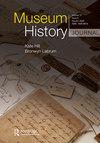Nationalism and internationalism on the borders: The West China Union University Museum of Art, Archaeology and Ethnology (1914–51)
IF 0.1
Q3 HISTORY
引用次数: 3
Abstract
ABSTRACT This paper examines the role played by the missionary West China Union University Museum of Art, Archaeology and Ethnology in shaping notions of nationalism and internationalism in China's southwest. Located in Chengdu, a place of multiethnic and global encounters on China's borderlands, this paper argues that the West China Museum was at the forefront of global efforts surrounding the development of museums which sought to advance scholarly research and education for citizens of both China and the world. Although nationalism and internationalism converged in the museum's displays and exhibitions, such a process was not without tensions. As Christianity faced the challenge of rising Chinese nationalism during this period, the missionary museum and its curators played a pivotal role in mediating the demands of both sides by engaging with local communities and the extensive use of their transnational networks.边疆上的民族主义与国际主义——华西联合大学艺术考古民族学博物馆(1914 - 1951)
本文考察了华西联合大学艺术考古与民族学博物馆在塑造中国西南民族主义与国际主义观念方面所起的作用。本文认为,华西博物馆位于中国边境多民族和全球相遇的地方成都,是全球博物馆发展努力的前沿,旨在促进中国和世界公民的学术研究和教育。虽然民族主义和国际主义在博物馆的展示和展览中融合,但这一过程并非没有紧张关系。在这一时期,基督教面临着中国民族主义崛起的挑战,传教士博物馆及其策展人通过与当地社区接触并广泛利用其跨国网络,在调解双方需求方面发挥了关键作用。
本文章由计算机程序翻译,如有差异,请以英文原文为准。
求助全文
约1分钟内获得全文
求助全文

 求助内容:
求助内容: 应助结果提醒方式:
应助结果提醒方式:


